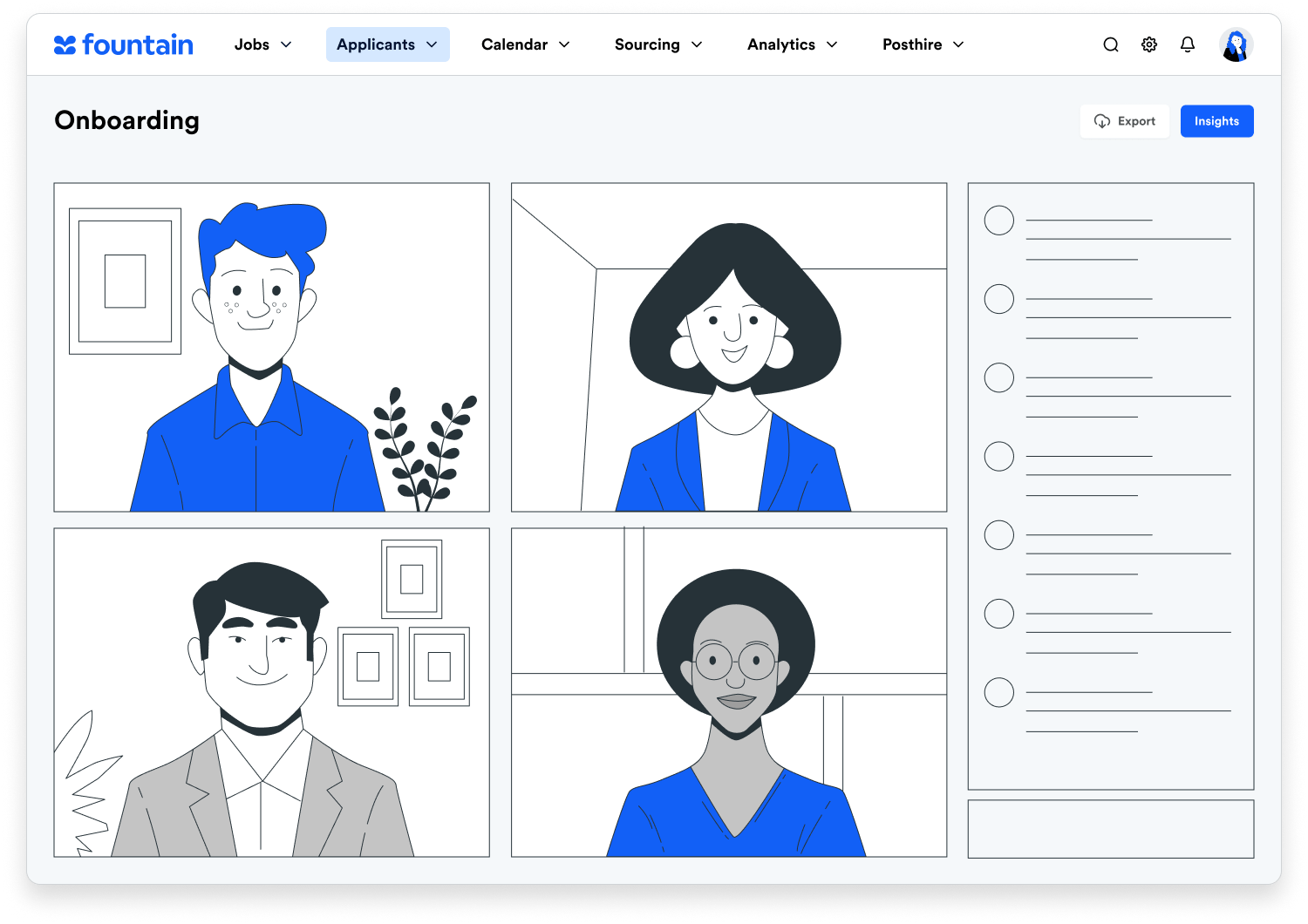The search for an all-in-one software that meets every need and excels at every level can be a long and arduous process. Human resource management software and talent acquisition software are no different. HR personnel need a comprehensive system that can track employees from first contact to retirement, handle overlapping datasets, and minimize integration costs and training.
Human capital management (HCM) platforms may have talent acquisition features, but they’re often secondary add-on modules, leading many companies to rely on applicant tracking systems (ATS) for recruiting.
Using different systems for HR management and talent acquisition doesn’t have to be an added burden for your HR department. In fact, when properly integrated, HCM and ATS offer a highly robust and efficient HR experience, making the recruiting process simpler and more rewarding for both HR personnel and applicants.
Human Capital Management
HCM software typically focuses on post-onboarding functionality, including time tracking, payroll, benefits, training, and performance management.
HCM-based payment systems normally include substantial reporting features, as well as useful productivity analytics and the ability to automate important processes such as employee payroll, bookkeeping, direct deposits, and tax filings.
Well-built HCM systems may also offer self-serve features for employees that help reduce the daily demands on HR personnel. But HCM systems of the past generally haven’t been designed with recruiting in mind, and newly added recruiting functions are lacking in functionality compared with full-featured ATS.
This is the price of the all-in-one system: Developers tend to prioritize certain features over others out of necessity.
While this jack-of-all-trades approach does not mean that HCM systems do not offer useful recruiting features, they’re generally not adequate for large-scale recruiting efforts, nor do they provide the long-term insights that help you optimize future recruiting efforts.
Applicant Tracking Systems
Fully-featured applicant tracking systems, on the other hand, focus on every aspect of recruitment and talent management, from candidate sourcing to onboarding. Many features of applicant tracking systems are not available as add-on HCM modules.
Applicant tracking systems offer superior functionality from the beginning of the recruiting process, allowing organizations to set up branded careers sites that list job openings and accept online applications. Job portals can even include features such as skills assessments.
Once candidates are in the pipeline, the ATS automates many aspects of the recruitment cycle, including initial candidate screening, candidate ranking, interview scheduling, and background checks, among others.
Applicant tracking systems can also automate communications with prospective candidates, improving the candidate experience and building brand awareness. Whether through automated emails, automated notifications throughout the hiring process, or accessible chatbots to answer applicants’ questions, an ATS can keep the lines of communication open.
Another benefit of most applicant tracking systems is the integration of video interviewing tools. Remote interviews have become especially important during the COVID-19 pandemic and are likely to continue well into the future.
Online resume submissions have led some people to apply for as many positions as possible, even if they don’t meet the position’s requirements. And with tech-savvy millennials comprising 35% of the U.S. workforce, organizations may find that they’re receiving thousands of applications for every job opening.
The large-scale unemployment occasioned by the pandemic has exacerbated this issue. By pre-screening candidates and checking resumes for certain keywords and job experience, applicant tracking systems allow HR personnel to focus on the most qualified candidates for each open position.
An ATS can generate meaningful analytics to help improve future recruiting efforts, particularly when integrated with artificial intelligence and machine learning tools. For example, by collecting data on candidate sources, the ATS can help the organization assess the effectiveness of using recruiters and job boards.
Are You Better off with Both?
There are a number of legitimate concerns about having separate applicant tracking systems and human capital management systems, including:
- The cost of implementing and maintaining two systems
- The cost and time needed to train staff on two different systems
- Inefficiencies arising from data entry duplication
- Inefficiencies arising from having data stored in multiple locations
The key to addressing these issues is through the integration of both ATS and HCM systems. Today, pre-built tools allow for simple connections between commonly used systems, and they can be implemented quickly to help you meet specific needs.
With an integrated system, you can create workflows to automate the hiring and onboarding process as much as possible. Once you have made a hire, your ATS can trigger the onboarding process and migrate data to the HCM system, streamlining onboarding and eliminating data entry duplication.
Conclusion
Talent recruitment is far too important a task to leave to mediocre tools, particularly for organizations with high volume recruiting. Integrating a separate fully featured ATS with your backend HCM system provides the best of both worlds—robust recruiting features for optimizing your recruitment process and robust post-hiring tools for your day-to-day business needs. It’s an investment but one that will pay back.

 Mar 26 2021
Mar 26 2021
